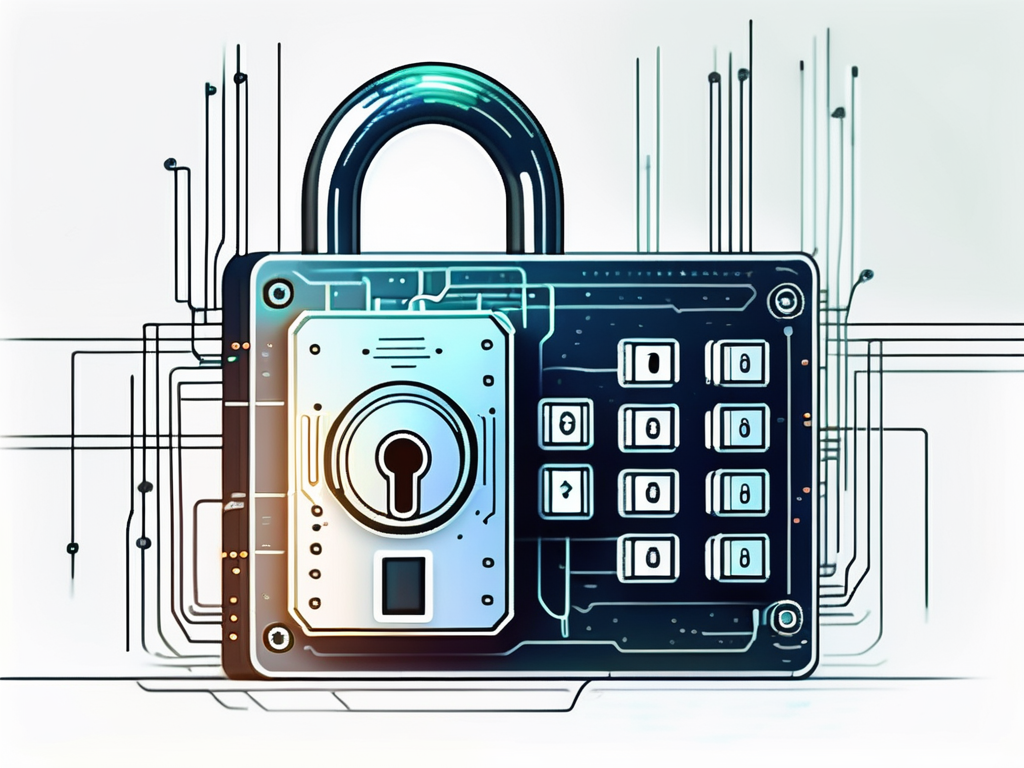The Importance of Low Code Security in Today’s Digital Landscape

In today’s rapidly evolving digital landscape, the importance of low code security cannot be overstated. As organizations increasingly rely on low code development platforms to accelerate application and software development, it is crucial to understand the significance of robust security measures.
Understanding Low Code Security
Before delving into the intricacies of low code security, it is imperative to define what exactly it entails. Low code security is a critical aspect of modern application development and ensuing application security, especially with the increasing adoption of low code platforms for rapid software creation.
Developers and organizations need to be aware of the various threats and vulnerabilities that can arise during the development and deployment phases. Understanding how to effectively secure low code applications, automations, and bots is essential in maintaining the integrity and confidentiality of sensitive data.
Defining Low Code Security
This refers to the set of practices and technologies implemented to protect applications built using low code development platforms. It involves safeguarding the confidentiality, integrity, and availability of data, as well as preventing unauthorized access and ensuring compliance with regulatory requirements. By incorporating robust security measures into the development process, organizations can mitigate risks and build trust with their users.
Key Features of Low Code Security
Low code security encompasses a range of key features that work in tandem to provide comprehensive protection:
- Authentication and Access Control: Ensuring that only authorized individuals can access and modify sensitive data through the apps they are building
- Secrets Scanning: Safeguarding personal credentials and secrets that are natively embedded into apps and automations
- Vulnerability Management: Proactively identifying and addressing potential vulnerabilities to prevent exploits.
- Secure Deployment: Implementing secure deployment practices to reduce the risk of tampering or unauthorized modification of applications.
- Incident Response: Establishing protocols and procedures to effectively respond to security incidents.
Additionally, the process of incorporating application security controls to low-code involves continuous monitoring and assessment of applications to detect and respond to emerging threats. Regular security audits and penetration testing help identify weaknesses in the system and ensure that security measures remain effective over time. By staying vigilant and proactive in addressing security concerns, organizations can build resilient and secure low code applications that meet the highest standards of data protection.
The Role of Security in the New Digital Landscape
Low code security plays a vital role in enabling organizations to leverage the capabilities of low code development platforms while ensuring the protection of digital assets.
In addition to its role in safeguarding digital assets, security and governance also contributes to enhancing the overall efficiency and productivity of development teams. In lieu of a traditional software development lifecycle, teams can focus on innovation and creating value-added features without the constant concern of vulnerabilities and threats, namely through the use of playbooks and policies.
Low Code Security and Digital Transformation
As digital transformation becomes increasingly pervasive, organizations are adopting low code development platforms to accelerate application delivery and meet the demands of the digital age. However, security must be integrated to avoid costly and time-consuming remediation efforts later on without hindering productivity.
Furthermore, low code security aligns with the principles of agile development, allowing organizations to iterate quickly and respond to changing market dynamics while maintaining a strong security posture. This iterative approach not only speeds up the delivery of applications but also ensures that security is a foundational element rather than an afterthought.
Protecting Digital Assets
With the increasing frequency and sophistication of cyber threats, organizations need robust security measures to protect their valuable digital assets. Low code security helps safeguard sensitive data, intellectual property, and customer information, mitigating the risk of breaches and maintaining a strong security posture.
Moreover, bringing an AppSec approach to low code empowers organizations to comply with regulatory requirements and industry standards by incorporating standards and policies to ensure that data is not leaked, access is monitored, and more.
The Risks of Ignoring Low Code Security
Ignoring low code security can have significant consequences for organizations, leaving them vulnerable to various threats and potential breaches. It is crucial for businesses to prioritize security measures in their low code applications to safeguard sensitive data and maintain trust with their users.
One of the key aspects of low code security is ensuring that proper authentication and authorization mechanisms are in place. Without these measures, malicious actors can easily gain unauthorized access to critical systems and compromise valuable information.
Potential Threats and Vulnerabilities
By neglecting low code security, organizations expose themselves to a multitude of threats, including unauthorized access, data breaches, injection attacks, and cross-site scripting. Attackers can exploit vulnerabilities in poorly secured low code applications, leading to financial and reputational damage. It is essential for businesses to conduct regular security assessments and implement best practices to mitigate these risks.
Furthermore, inadequate security measures can also result in service disruptions and downtime, impacting the productivity and efficiency of an organization. This can lead to significant revenue losses and operational challenges, highlighting the importance of investing in robust security protocols.
The Cost of Security Breaches
Security breaches can have far-reaching financial implications, resulting in regulatory fines, legal battles, loss of business, and a damaged reputation. The cost of a security breach far exceeds the investment required to implement security measures. Organizations must understand the potential consequences of a breach and take proactive steps to secure their low code applications effectively. It is so critical in low-code development because of the scale and volume of apps, automations, and business users that interact with these assets throughout the enterprise. This can, of course, include guest users and 3rd party vendors.
Moreover, in today’s interconnected digital landscape, the reputational damage caused by a security breach can have long-lasting effects on customer trust and loyalty. Customers are increasingly concerned about the security of their data, and any breach can erode confidence in an organization’s ability to protect sensitive information.
Implementing Low Code Security Measures
Implementing effective security measures is crucial to mitigate risks and ensure the long-term security and stability of applications. In today’s digital landscape, where cyber threats are constantly evolving, organizations must prioritize the implementation of robust security practices to safeguard their low code applications.

It is critical to bring an AppSec mindset to the new way of developing apps. By following these guidelines, organizations can significantly enhance the security posture of their low code applications:
- Implement Secure Authentication: Ensure that apps that are built have strong authentication mechanisms, such as multi-factor authentication, to verify user identities and prevent unauthorized access. This adds an extra layer of protection, making it harder for attackers to compromise user accounts. This is not always the default setting for certain platforms (like Copilot Studio) so education is critical.
- Regularly Patch and Update: Keep software components, libraries, and frameworks up to date to address known vulnerabilities. Regularly applying patches and updates ensures that any security flaws or weaknesses are promptly addressed, reducing the likelihood of successful attacks. Using SBOMs for each individual app is a good place to start.
- Conduct Regular Security Audits: Perform comprehensive security audits to identify and remediate potential weaknesses or vulnerabilities in low code applications. These audits help organizations proactively identify security gaps and take necessary measures to strengthen their applications.
- Educate and Train Developers: Provide ongoing security training to developers, ensuring they have the necessary knowledge and skills to build secure low code applications. By investing in developer education, organizations empower their teams to make informed security decisions and develop applications with security in mind from the start.
While implementing low code security measures is essential, organizations often face challenges that need to be overcome in order to ensure effective security implementation:
- Integration Complexity: Integrating security measures seamlessly within low code development platforms can be complex and require careful planning. Organizations need to consider the compatibility of security tools and frameworks with their chosen low code platform to ensure a smooth integration process.
- Resource Constraints: Organizations may face resource constraints when allocating dedicated security personnel and budgets for low code security. It is crucial to prioritize security investments and allocate resources effectively to address potential security risks.
- Legacy System Integration: Integrating low code applications with existing legacy systems can introduce additional security complexities that need to be addressed. Organizations must carefully assess the security implications of integrating low code applications with legacy systems and implement appropriate security measures to mitigate any risks.
By acknowledging these challenges and taking proactive steps to address them, organizations can successfully implement low code security measures and protect their applications from potential threats. Prioritizing security in the low code development process not only enhances the overall security posture but also instills confidence in end-users and stakeholders.
The Future of Low Code Security
The landscape of low code security is continuously evolving as new technologies emerge and threats evolve. Organizations must stay ahead of the curve to ensure their applications remain secure in the face of emerging challenges.

Emerging Trends
Several emerging trends will shape the future of low code security:
- Artificial Intelligence and Machine Learning: AI and ML technologies can enhance security by detecting anomalies, analyzing patterns, and continuously improving threat detection and prevention mechanisms. They can also expedite and help grow the speed and volume of how apps are built, including even ‘build your own AI’
- Zero-Trust Security: Zero-trust architecture, which assumes that all network traffic and user activities are potentially malicious, enhances security by implementing strict access controls and continuously validating trust.
- Data Privacy and Compliance: With the increasing focus on data privacy regulations, such as the General Data Protection Regulation (GDPR) and the California Consumer Privacy Act (CCPA), organizations must prioritize data protection in low code applications.
Preparing for Future Security Needs
Organizations must proactively prepare for future security needs by:
- Investing in Research and Development: Continuously investing in research and development will help organizations stay ahead of emerging threats and technologies.
- Collaborating with Security Experts: Engaging with security experts and participating in industry collaborations and forums can provide valuable insights and best practices.
- Emphasizing a Culture of Security: Promoting a security-conscious culture within organizations cultivates awareness, accountability, and continuous improvement in security practices.
Conclusion
In conclusion, low code security is of paramount importance in today’s digital landscape. By understanding the intricacies, however, organizations can leverage the benefits of low code development platforms while safeguarding their digital assets from potential threats. The risks of ignoring security are severe and can result in devastating financial and reputational consequences. Implementing robust low code security measures, adhering to best practices, and staying abreast of emerging trends will enable organizations to protect their applications and adapt to future security challenges.




